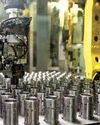The new regime will inherit tall targets like doubling farmers’ income, along with policies that have not worked – and a drought

IN HIS LAST BUDGET SPEECH Union Minister for Finance, Arun Jaitley had said, “My government is committed for the welfare of farmers. For decades, (the) country’s agriculture policy and programme had remained production centric. We have sought to effect a paradigm shift.” Indeed, the Bharatiya Janata Party (BJP) led coalition at the Centre has over the last four years announced a plethora of policy measures that aim to double income levels of Indian farmers and energise the rural economy. As the term of the present government draws to a close, statistics though, throw up scary paradoxes.
Presenting a paper at the Indian Agriculture Outlook Forum — 2018, Pramod Kumar of the Institute of Social & Economic Change, for instance, claimed that the rural economy’s contribution to India’s total gross domestic product (GDP) was actually expected to slide from 47 per cent in 2011-12 to 44 per cent in 2020-21. The following year incidentally, is the targeted deadline for doubling farmers’ income. The rural economy’s share of the GDP is projected to plummet further to 40 per cent by 2032-33. These projections belie the professed paradigm shift in the policy on agriculture.
In the paper titled, Demand and supply forecasts of foodgrains, oilseeds, horticulture and animal products, Kumar also predicts a steady rise in the rural population from 835.4 million in 2011-12 to 900 million by 2021-22. By 2025-26, when India’s total population is likely to shoot up to 1.447 billion, 918 million people will probably live in the rural hinterland. A rising rural population will only accelerate the pace at which landholdings get fragmented.
This story is from the {{IssueName}} edition of {{MagazineName}}.
Start your 7-day Magzter GOLD free trial to access thousands of curated premium stories, and 9,000+ magazines and newspapers.
Already a subscriber ? Sign In
This story is from the {{IssueName}} edition of {{MagazineName}}.
Start your 7-day Magzter GOLD free trial to access thousands of curated premium stories, and 9,000+ magazines and newspapers.
Already a subscriber? Sign In

MEMORIES & IMPRESSIONS
Ratan Tata was an exceptional human being. He was a visionary leader, esteemed industrialist, and a humanitarian, who left an indelible mark on India and the world.

The Robotaxi Market
The robotaxi market is shaping up to be a high-stakes battleground as tech giants and automakers race to transform urban mobility.

And the Nobel Prize Goes to AI
The recent Nobel Prize T awards to AI pioneers affiliated with Google have sparked a broader conversation about Big Tech's influence on research and the limitations of traditional prize categories.

Ola Electrified
Once considered a trailblazer in India’s electric vehicle (EV) ecosystem, Bhavish Aggarwal’s Ola Electric now faces a major accountability crisis.

Sharp Slide in Industrial Output on Eve of Deepavali
India’s index of industrial production (IIP) saw a sharp reversal in August, contracting by 0.1 per cent, in stark contrast to the 4.7 per cent growth in July, mostly because of significant contractions in mining and electricity generation.

Heralding the Solar Era with Sustainable Electrification
RAJEEV KASHYAP on the economics of solar power, the hurdles in scaling it, and much more

A WELL-GREASED MACHINE
The OmniBook X14 laptop runs on first-generation Snapdragon X Elite, which bets big on Al-enabled productivity and battery life, but falls short when it comes to overall experience, says Deep Majumdar

DO NOT LETA HEALTH CRISIS RUIN YOUR FINANCIAL HEALTH
For a family of four living in a metro, it is recommended to opt for a family floater health insurance plan with a sum insured of at least Rs 15-20 lakh

Disruption Ahead: Beyond Organisation Charts and Structures
ALBERT EINSTEIN FAMOUSLY said, “We cannot solve our problems with the same thinking we used when we created them.

Dr. Rahul Shivajirao Kadam: A Visionary Leader Blending Sustainability, Innovation, And Social Empowerment
We are on the stage of global warming, and these technologies not only help prevent further damage but also leave behind a better environment for future generations.